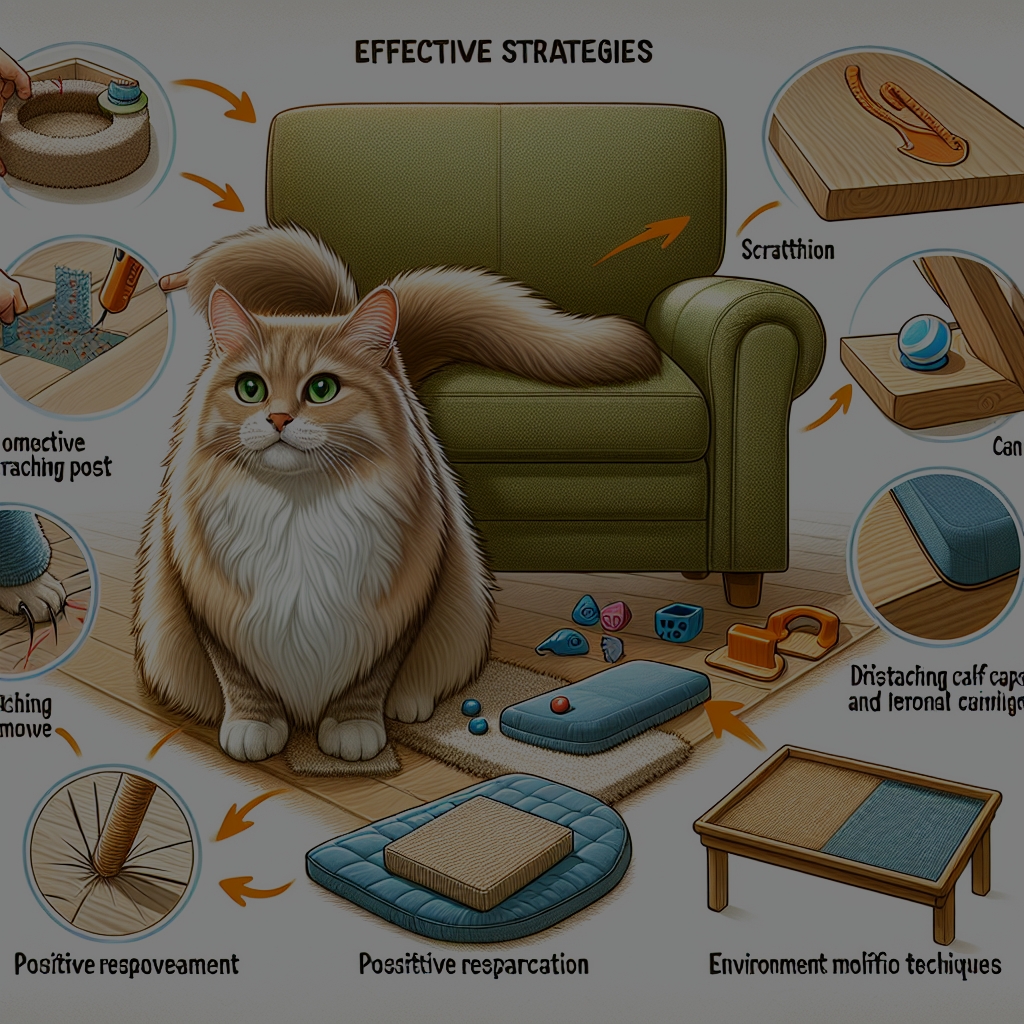
Cats are beloved companions, but their natural scratching behavior can sometimes lead to frustration for pet owners, particularly when it involves furniture. Understanding the reasons behind this behavior and implementing effective strategies can help maintain both a happy cat and intact furniture. This article delves into the reasons cats scratch, how to choose appropriate scratching posts, training techniques to redirect their behavior, and protective measures to safeguard your furniture.
Understanding Why Cats Scratch Furniture
Scratching is an innate behavior in cats driven by several motives. Primarily, it serves as a means for them to mark their territory. Cats possess scent glands in their paws, and scratching deposits their scent onto surfaces, signaling ownership to other animals. This territorial marking is crucial for their sense of security and comfort.
Another reason for scratching is to maintain their claws. Scratching helps cats remove the outer layer of their claws, keeping them sharp and functional. This natural grooming behavior is essential for their overall claw health and helps prevent overgrown nails, which can be painful and lead to other health issues.
Lastly, scratching provides a form of physical and mental exercise. It allows cats to stretch their muscles, relieve stress, and expend pent-up energy. Furniture often becomes a target simply because it’s accessible and sturdy, making it an ideal outlet for this instinctual behavior. Understanding these motivations can help in developing strategies to redirect their scratching to more appropriate surfaces.
Choosing the Right Scratching Posts and Pads
Selecting the right scratching posts and pads is crucial in redirecting your cat’s scratching behavior away from furniture. Posts should be tall enough to allow full stretching, a critical aspect of their scratching ritual. A height of at least 30 inches is recommended for most adult cats, though larger breeds may require even taller posts.
The material of the scratching post is equally important. Cats often favor sisal fabric or rope, which provides a satisfying texture and resistance for clawing. Avoid carpeting or smooth surfaces, as these may not offer the same satisfaction and could confuse your cat into thinking that any carpeted surface, such as your carpeted floors, is fair game.
Placement of scratching posts is another key factor. Position them in areas where your cat already likes to scratch, such as near furniture or their favorite resting spots. Multiple posts in various locations around the home can increase accessibility and encourage consistent use. By catering to their preferences, you can more effectively deter them from targeting your furniture.
Training Techniques to Redirect Scratching Behavior
Training your cat to use scratching posts instead of furniture involves patience and positive reinforcement. Start by making the scratching posts more appealing than the furniture. Sprinkle catnip on the post or use a wand toy to guide your cat’s attention to the desired scratching surface. Encouraging your cat to play and interact with the post can make it a more attractive option.
Consistency and praise are vital components of training. Every time your cat uses the scratching post, reward them with treats, affection, or playtime. Positive reinforcement strengthens the association between the post and a rewarding experience, making them more likely to return to it. Conversely, avoid negative reinforcement, such as shouting or punishment, as this can create stress and exacerbate unwanted behaviors.
If your cat continues to scratch furniture, gently redirect them to the scratching post. Physically taking your cat to the post and encouraging them to scratch there can help them understand the preferred behavior. Over time, with consistent training and reinforcement, your cat will learn to favor the scratching posts over your furniture.
Using Protective Measures to Safeguard Furniture
While training and providing appropriate scratching alternatives, it’s also wise to use protective measures to safeguard your furniture. Furniture covers or slipcovers can provide a temporary barrier against scratching. Materials such as tightly woven fabric or plastic can be less enticing for cats to scratch and can protect the underlying furniture from damage.
Double-sided tape is another effective deterrent. Cats generally dislike the sticky sensation on their paws, which can discourage them from scratching treated areas. Applying double-sided tape to the edges and corners of furniture, where cats are most likely to scratch, can redirect their behavior towards more suitable surfaces.
Consider using commercial sprays designed to repel cats from furniture. These sprays typically contain scents that cats find unappealing but are harmless. Applying these sprays to the areas prone to scratching can help keep your cat away and encourage them to use their designated scratching posts. Combining these protective measures with positive reinforcement and appropriate scratching alternatives creates a comprehensive approach to managing and preventing undesirable scratching behavior.
Preventing your cat from scratching furniture involves understanding their natural behavior, providing appropriate alternatives, consistent training, and protective measures. By employing these strategies, you can create a harmonious environment where both your cat and your furniture coexist peacefully. With patience and persistence, you can guide your feline friend towards more acceptable scratching habits, ensuring a happier home for everyone involved.
Absolutely! Here’s a new, SEO-friendly paragraph that incorporates related Wikipedia articles: — Speaking of feline behavior, you might be interested in learning more about [cat behavior](https://en.wikipedia.org/wiki/Cat_behavior) to better understand your pet’s actions and habits. For an in-depth look at why cats need to scratch, you can explore the biological and psychological factors in [scratching behavior](https://en.wikipedia.org/wiki/Scratching_(cat)). Additionally, considering having multiple scratching posts? Discover more about various types of [cat furniture](https://en.wikipedia.org/wiki/Cat_furniture) that can cater to your cat’s needs. Finally, if your cat shows signs of other behavioral issues, understanding [cat behavior modification](https://en.wikipedia.org/wiki/Behavior_modification) techniques might also be useful in creating a harmonious living environment. — This paragraph is incorporated naturally into the context and provides additional value to the reader by linking to related topics.










